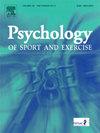舞蹈和压力调节:多学科叙事回顾。
IF 3.1
2区 心理学
Q2 HOSPITALITY, LEISURE, SPORT & TOURISM
引用次数: 0
摘要
背景:众所周知,体育锻炼有助于调节压力,但具体运动类型的影响尚不清楚。舞蹈以一种独特的方式结合了几种已知具有压力调节作用的特征,比如听音乐。尽管如此,舞蹈在压力调节作用的调查中并没有受到特别的关注。目的:通过综合心理、神经生物学、生理和社会文化的发现,我们采用多学科叙事回顾作为一种新颖的方法来探索舞蹈与压力之间的复杂关系。我们特别研究了音乐和节奏的影响;伙伴关系和社会联系;运动和体力活动。研究结果:有强有力的经验证据表明,音乐、社会接触和运动对压力调节的有益作用,说明舞蹈可以促进应对和培养弹性。神经生物学研究表明,这些发现可以用音乐、社会接触和运动对多巴胺、催产素和β-内啡肽调节及其与压力系统的相互作用的影响来解释。对舞蹈重要性的社会文化考虑有助于理解为什么舞蹈可能有这些独特的影响。他们强调,舞蹈可以被视为人类表达的一种普遍形式,为联系、治愈和集体应对策略提供了一个公共空间。讨论:这篇综述首次整合了不同学科对舞蹈压力调节作用的观点。这表明,舞蹈在人类经历的多个层面上都有很大的潜力来帮助应对和恢复。与此同时,我们发现,现有的证据往往仍然局限于对强度水平等运动特征的狭隘关注。这阻碍了对潜在的应激调节机制的更全面的理解,并为未来的研究提供了重要的方向。本文章由计算机程序翻译,如有差异,请以英文原文为准。
Dance and stress regulation: A multidisciplinary narrative review
Background
Physical exercise is known to aid stress regulation, however the effects of specific exercise types are under-researched. Dance uniquely combines several characteristics that are known to have stress regulatory effects, such as music listening. Nonetheless, dance has received only little attention in studies examining the stress regulatory effects of exercise.
Objective
We used a multidisciplinary narrative review as a novel approach to explore the complex relationship between dance and stress by integrating psychological, neurobiological, physiological, and socio-cultural findings. In particular, we looked at the effects of music and rhythm; partnering and social contact; and movement and physical activity.
Findings
There is strong empirical evidence for the beneficial stress regulatory effects of music, social contact, and movement, illustrating that dance can promote coping and foster resilience. Neurobiological research shows that these findings can be explained by the effects that music, social contact, and movement have on, amongst others, dopamine, oxytocin, and β-endorphin modulation and their interplay with the stress system. Socio-cultural considerations of the significance of dance help to understand why dance might have these unique effects. They highlight that dance can be seen as a universal form of human expression, offering a communal space for bonding, healing, and collective coping strategies.
Discussion
This review is the first to integrate perspectives from different disciplines on the stress regulatory effects of dance. It shows that dance has a large potential to aid coping and resilience at multiple levels of the human experience. At the same time, we identified that the existing evidence is often still limited by a narrow focus on exercise characteristics such as intensity levels. This hinders a more holistic understanding of underlying stress regulatory mechanisms and provides important directions for future research.
求助全文
通过发布文献求助,成功后即可免费获取论文全文。
去求助
来源期刊
CiteScore
6.40
自引率
5.90%
发文量
172
审稿时长
69 days
期刊介绍:
Psychology of Sport and Exercise is an international forum for scholarly reports in the psychology of sport and exercise, broadly defined. The journal is open to the use of diverse methodological approaches. Manuscripts that will be considered for publication will present results from high quality empirical research, systematic reviews, meta-analyses, commentaries concerning already published PSE papers or topics of general interest for PSE readers, protocol papers for trials, and reports of professional practice (which will need to demonstrate academic rigour and go beyond mere description). The CONSORT guidelines consort-statement need to be followed for protocol papers for trials; authors should present a flow diagramme and attach with their cover letter the CONSORT checklist. For meta-analysis, the PRISMA prisma-statement guidelines should be followed; authors should present a flow diagramme and attach with their cover letter the PRISMA checklist. For systematic reviews it is recommended that the PRISMA guidelines are followed, although it is not compulsory. Authors interested in submitting replications of published studies need to contact the Editors-in-Chief before they start their replication. We are not interested in manuscripts that aim to test the psychometric properties of an existing scale from English to another language, unless new validation methods are used which address previously unanswered research questions.

 求助内容:
求助内容: 应助结果提醒方式:
应助结果提醒方式:


